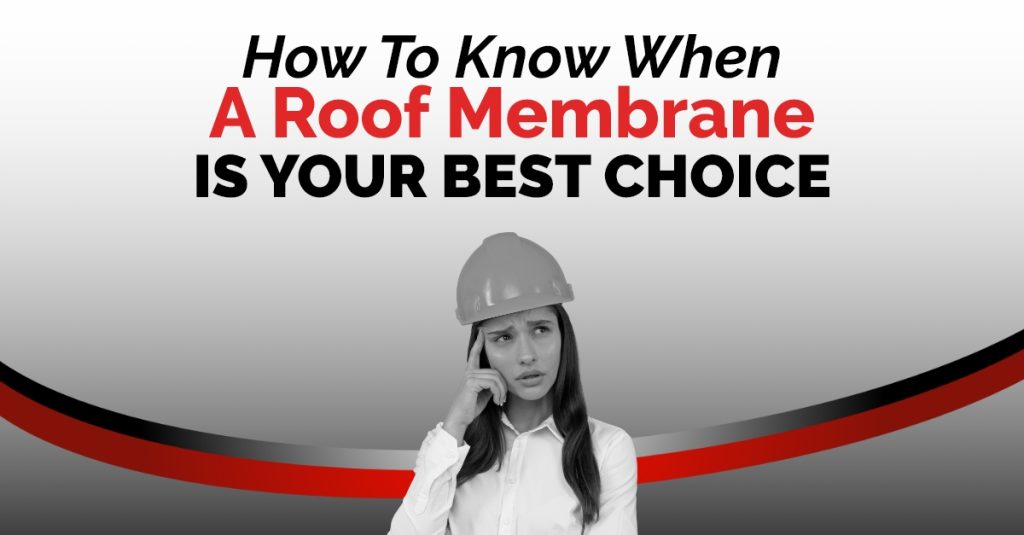Whether it’s for your home or business, replacing your roof is a significant investment. It’s critical to hire a reliable, reputable roofing company.
This article will explain more about membrane roofs and why you might need one for your home or business. Typically, if you need a membrane roof it won’t come as a surprise. However, some homeowners may have shingles on their low-slope roofs, and face an early replacement. Learn how a membrane roof might better fit your home’s unique design.
What is a membrane roof?
Membrane roofing forms a continuous waterproof barrier to protect low-slope roofs on commercial buildings, multi-family homes, or single-family homes from leaks. Membrane roofs are commonly employed as a flat roofing system because they are waterproof. They provide protection on roofs where shingles, slate, or tile roofing would be ineffective.
When is a membrane needed?
A membrane roof is needed for a low-slope or ‘flat’ roof. Membrane roofs ensure water does not seep into your business or home. For low-slope roofs, traditional shingles may not prevent leaks and damage as effectively as a membrane roof.
Is a membrane roof more costly?
A common question is, “Is a membrane roof more expensive than shingles?”. While this is an understandable concern – there are a few factors to consider.
The material for membrane roofing is slightly more expensive than a traditional roof. However, even if you save a small amount of money upfront by choosing shingles, in the long term, you’ll be paying more for:
- Repairs
- Water damage
- Early replacement due to leaks
How can I keep it straight?
A roofing membrane can often be confused with these two other roofing elements. Understanding the difference is essential so you can make an informed decision about your roof replacement.
- Water and Ice Shield: While the goal is the same (preventing water), a water and ice shield is a waterproof barrier laid under your shingles. These are used on roofs of any level of steepness. This shield prevents ice damming, saving you costly water damage to your exterior fascia boards and roof.
- Underlayment: Underlayment is a layer of protection between your shingles and the base layer of your roof (called your deck). Underlayments are best practice and should come standard with your roof replacement. Be sure to check your roofing bid to ensure this is included!
AIC has replaced thousands of roofs in central Kentucky. We are experts in shingle roofing and want to help you find the best long-lasting solution for your home, whether we install your shingle roof or you go with someone else. To learn more about roofing types, selecting a contractor, and what you can expect during the process, head to our Learning Center. If you’re ready to get started with a free consultation on your commercial or residential roof replacement – contact us today!
Default insurance Lexington Louisville Richmond roof replacement
